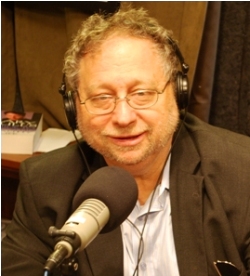The Battleground called Media |
"There are laws to protect the freedom of the press's speech, but none that are worth anything to protect the people from the press." – Mark Twain, author, 1873
The events of 9/11 introduced a new player in our media-dominated political culture. The attacks on American targets were staged for their dramatic effect, as a variant on what revolutionaries once called ‘armed propaganda’, an attack orchestrated to achieve maximum media attention by extremely media conscious terror groups.
In response, the Pentagon announced the ‘surge’ focusing attention on selected (and well spun) battles in places like Marjah and Kandahar as if they were representative of what was going on in the rest of the country. The civilian casualties were downplayed and devastating drone attacks wiping out more bystanders than soldiers simply not mentioned.
And yet, with few exceptions, this media strategy and sophistication was rarely explained in the media. The war in Afghanistan is being fought as much for domestic consumption – to show ‘we’ are winning and justify US intervention – as to help the Afghan people.
Understand this too, Osama bin Laden and his Al Qaeda cadres were also very media savvy. They used computer games to train for the assault on the World Trade Center. They relied on the Internet, and had their own video unit to make training tapes for their internal use and video messages for external transmission to outlets like Al-Jazeera.
Those staged videos were then reported on and rebroadcast by media outlets worldwide. All were image conscious, skillfully exploiting the symbols of their jihad politics and top leader just as consciously as US Presidents who stage photo ops and press conferences in the Rose Garden.
In our new high-tech age of connectivity, media wars are increasingly fought alongside armed conflicts. Today’s warriors fight along the grids of technology, economic interdependence and ideological combat. Information wars have become central to war fighting. Their messages are targeted in equal measure to different audiences – to their respective constituencies, and adversaries. The War on Terrorism builds its own strategy of counter measures influenced by playbooks used by their enemies.
While the martyrs of the mujahadeen take on the kafir (non-believing infidels), the White House attacks ‘evil doers’ and their ‘axis’, and the two sides become more alike than they realize with an almost shared arguments.
Caught in these crosshairs are the people, the citizens at risk with a need to know what is going on, and how to survive a frightening new situation in an era they are told has ‘changed forever’.
I write as a media maker-cum-media critic who is convinced that its role in this conflict is central to understanding it, although it is mostly ignored. Media rarely calls attention to its own role. And yet, the media's impact in this crisis is at once total and at the same time, elusive. It needs to be understood more deeply, to be dissected as it were, but also challenged.
After September 11th, while much of the media mantra spoke of a changing world, I observed an unchanging media.








 News Director Danny Schechter is an author, blogger and filmmaker. He edits Mediachannel.org, a global media issues network and directs films. His latest Plunder: The Crime of Our Time treats the financial crisis as a crime story. He can reached at
News Director Danny Schechter is an author, blogger and filmmaker. He edits Mediachannel.org, a global media issues network and directs films. His latest Plunder: The Crime of Our Time treats the financial crisis as a crime story. He can reached at 
Post new comment